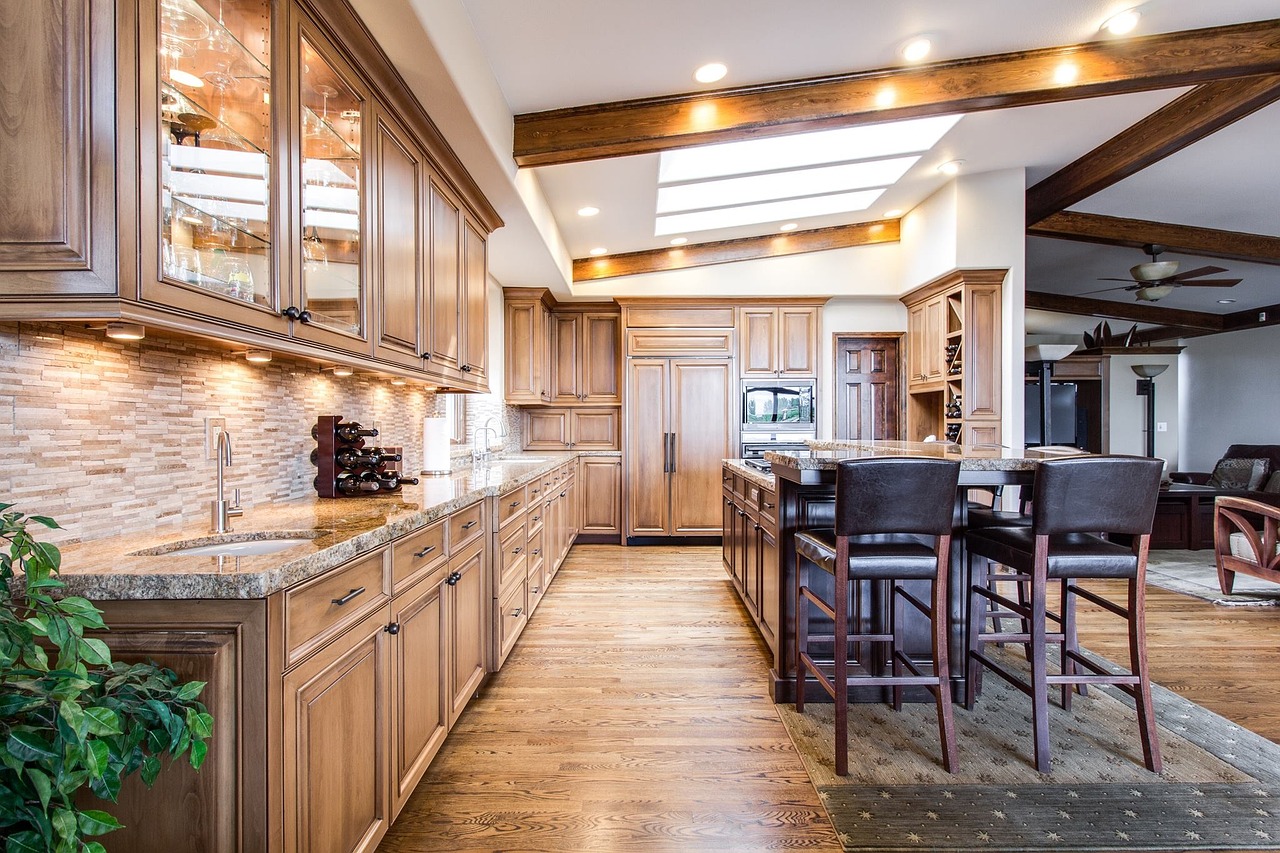The evolution of luxury real estate over time

In the ever-changing landscape of the global economy, few sectors are as dynamic and intriguing as luxury real estate. The allure of luxury homes and properties has always been pervasive, but the way we perceive and value this high-end real estate market has significantly evolved over time. In this article, we will take you on a journey through time, from the opulence of ancient empires to the state-of-the-art smart homes of today. We delve into the factors that have shaped the luxury real estate market, and how it has grown to become a fascinating blend of tradition, innovation, and economic trends.
The Classic Era: Grandeur and Magnificence
In earlier periods, luxury real estate was a tangible reflection of wealth and power. The affluent members of society were keen to display their financial prowess through grand and magnificent homes.
Dans le meme genre : Understanding real estate crowdfunding
From the grand palaces of emperors and kings to the sprawling estates of the nobility and the manor houses of the landed gentry, the classic era was defined by an overt show of richness. Architecture and design during this period were characterized by large structures, beautiful craftsmanship, and an emphasis on ornate detailing and ostentatious decor. These properties were often passed down through generations, becoming symbols of family legacy and prestige.
In the modern context, many of these historic properties have been converted into luxury hotels or museums, testament to their timeless appeal and architectural significance. Others are still owned by descendants of the original families, carefully maintained and occasionally opened to the public for tours.
A lire aussi : The importance of life insurance in financial planning
The Industrial Revolution: A New Breed of Luxury
The advent of the Industrial Revolution saw a fundamental shift in the nature of wealth, as the traditional aristocracy gave way to a new class of industrialists and entrepreneurs. This dramatic change in societal structure was reflected in the world of luxury real estate.
Unlike their predecessors, the newly-minted millionaires of the industrial age preferred to invest their wealth into new technologies and industries, rather than ostentatious homes. Nevertheless, they still desired comfortable and stylish residences. This era saw the rise of luxurious townhouses and opulent country homes, designed with a more restrained elegance and a focus on functionality.
It was during this period that the concept of prime location became a critical factor in luxury real estate. The affluent began to favor properties in exclusive neighborhoods or in picturesque locales, giving rise to the saying, location, location, location.
The Age of Innovation: From Function to High-tech Luxury
As the world moved into the 20th century, the definition of luxury real estate continued to evolve. The advent of the Technology Era introduced a new wave of wealthy individuals – the tech moguls, who brought with them an entirely new vision for luxury homes.
Often young and innovative, these tech entrepreneurs started placing a high value on smart homes equipped with the latest technology. High-tech security systems, home automation, eco-friendly design, and other modern amenities became must-haves in luxury real estate. The focus shifted from mere grandeur and location to innovative design and state-of-the-art facilities.
Today’s luxury properties often include home theaters, indoor pools, wellness centers, wine cellars, and even private helipads. These homes are designed to provide homeowners with the ultimate comfort and convenience, while also reflecting their status and lifestyle.
The Rise of the Global Luxury Market
While luxury real estate was once the domain of the local elite, the past few decades have seen it become a truly global market. As international travel and communication have become easier, wealthy individuals from around the world have started investing in luxury properties in foreign countries.
This trend has given rise to a new kind of luxury property – the luxury second home or vacation property. Located in prime tourist destinations, these homes offer the ultimate in leisure and relaxation, combined with the prestige of owning property in a coveted location.
The global market for luxury real estate is now driven by a variety of factors, including economic conditions, political stability, and lifestyle trends. High-net-worth individuals are more willing than ever to invest in luxury properties that meet their specific needs and preferences, no matter where in the world they may be located.
The Future of Luxury Real Estate: Sustainability and Wellness
As we look to the future, the trends shaping the luxury real estate market are clear. Increasingly, affluent buyers are seeking properties that not only offer luxury and comfort, but also prioritize sustainability and wellness.
Eco-friendly design, energy efficiency, and sustainable building materials are becoming more and more important in luxury real estate. Alongside this, there is a growing demand for homes that include wellness facilities like home gyms, spa facilities, and even meditation rooms.
In essence, the luxury homes of the future will not only be beautiful and technologically advanced, but also in harmony with nature and designed to promote physical and mental wellbeing. This shift reflects a broader societal trend towards sustainability and wellness, and is likely to shape the luxury real estate market for years to come.
The Impact of the Digital Age and Virtual Reality on Luxury Real Estate
With the dawn of the digital age, the luxury real estate market is once again undergoing a transformation. Technology is constantly pushing the boundaries of what’s possible in luxury housing, with virtual reality and augmented reality becoming crucial parts of the home-buying process.
In today’s fast-paced world, wealthy individuals often don’t have the time to physically visit multiple properties before deciding on a purchase. This is where virtual reality (VR) comes in. Prospective buyers can now take virtual tours of luxury homes from anywhere in the world, experiencing the property as if they were there in person.
Augmented reality (AR), on the other hand, allows potential buyers to virtually place furniture and other decor items in a property, helping them visualize how the space could be used and personalized. This combination of VR and AR is revolutionizing the way luxury properties are viewed and purchased.
Moreover, digital platforms and social media networks have become powerful tools for real estate agents and companies. Luxury properties are now showcased to a global audience, with high-quality photos and videos, interactive virtual tours, and even drone footage providing a comprehensive view of the property. This digital exposure not only expands the potential buyer pool but also allows for a more efficient and personalized buying process.
This shift towards digitalization and the use of immersive technologies is expected to continue shaping the luxury real estate market in the foreseeable future, making the home-buying process more convenient, interactive, and personalized.
Conclusion: The Ever-Evolving Luxury Real Estate Landscape
The evolution of luxury real estate is a fascinating journey, from the grandeur of the classic era and the innovations of the industrial age to the technological advancements and global reach of today’s market. This ever-evolving landscape is a direct reflection of societal changes, economic trends, and technological progress.
Today, the luxury real estate market is a dynamic and globally interconnected sector, with luxury properties being bought and sold across borders. The advent of the digital age and immersive technologies has revolutionized the home-buying process, making it more convenient and personalized.
Looking ahead, the future of luxury real estate appears to be heading towards sustainability and wellness, with eco-friendly design and wellness facilities becoming increasingly important to affluent buyers. This shift reflects a broader societal trend towards sustainability and wellness, and is set to shape the luxury real estate market in the years to come.
Ultimately, the allure of luxury real estate remains as captivating as ever, with the definition of luxury constantly being redefined and expanded. As we move forward, it will be fascinating to see how the luxury real estate market continues to evolve and adapt to changing societal needs and technological advancements.
